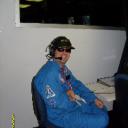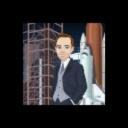Yahoo Answers is shutting down on May 4th, 2021 (Eastern Time) and beginning April 20th, 2021 (Eastern Time) the Yahoo Answers website will be in read-only mode. There will be no changes to other Yahoo properties or services, or your Yahoo account. You can find more information about the Yahoo Answers shutdown and how to download your data on this help page.
Trending News
Which of these factors most limits the ability of astronauts to travel to different stars?
Which of these factors most limits the ability of astronauts to travel to different stars?
F the lack of accurate navigational systems
G the time needed to travel great distances
H the inability to communicate over long distances
J the speed of the stars as the universe expands
10 Answers
- Roger SLv 79 years ago
As mentioned, G.
This is because the average star is several dozen light years from earth. A light year is how far light travels in a year. Nothing but light itself can travel this fast and with present technology it would take thousands of years to get to the nearest star.
- ScottLv 79 years ago
F H and J can all be accounted for and adjustments can be made accordingly so G is the only one that we can't make adjustments for especially given the effects that long term space travel has on the human body
Source(s): 3 years space camp 5 years adult space camp - How do you think about the answers? You can sign in to vote the answer.
- cset2Lv 49 years ago
It is g it would take over 200,000 years to reach the nearest star besides the sun, with he fastest man made object.
- 9 years ago
G...and the gravitational affection on stars keep them from moving away from each other.space expansion is only affective over intergalactic space.
- Anonymous9 years ago
Lazy cheater.





